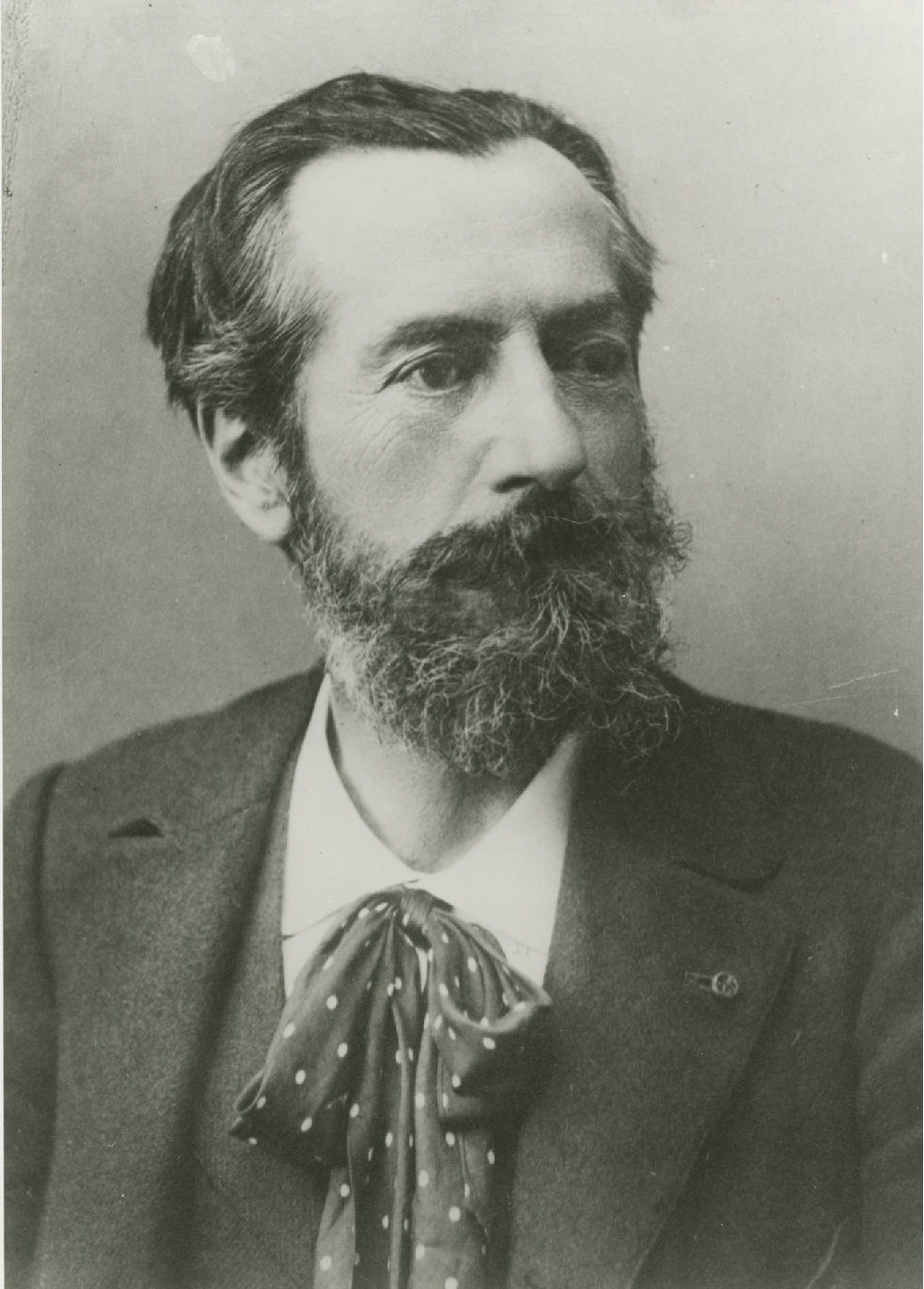
Frédéric-Auguste Bartholdi
ca. 1898 – 1900
“My only ambition has been to engrave my name at the feet of great men and in the service of grand ideas.” —Frédéric-Auguste Bartholdi
Among the most enthusiastic supporters of Laboulaye’s proposed monument to liberty was a young sculptor—Frédéric-Auguste Bartholdi. A resolute French patriot, Bartholdi served as a major in the Franco-Prussian War and later established a career creating grand patriotic monuments. Bartholdi became familiar with the aesthetic, engineering, and political aspects of planning and constructing large-scale sculpture, which influenced his choice to pursue colossal sculpture.
Frédéric-Auguste Bartholdi spent years developing his design for the Statue. Weaving together classical symbols to create new meanings, he composed each attribute to express a contemporary notion of liberty. He referenced images of the Roman goddess Libertas, who traditionally wore a “Phrygian” cap, the headgear of a freed Roman slave. The cap’s symbolism had been revived during the bloody French Revolution, so Bartholdi replaced this cap with a seven-rayed “sunburst,” symbolizing reason and enlightenment. In his statue’s left arm, Bartholdi placed a tablet representing the law. Written on it in Roman numerals is the date July 4, 1776, Bartholdi’s homage to the American Revolution and the Declaration of Independence. Chains broken under the Statue’s foot signify the emancipation of the enslaved and the end of tyranny. A torch lifted high in the Statue’s right hand gives meaning to Bartholdi’s name for his sculpture: Liberty Enlightening the World.
Statue of Liberty National Monument, LA-100-103